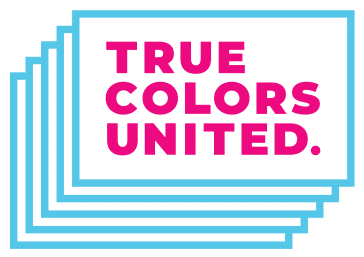
Creating safe and inclusive environments for lesbian, gay, bisexual, and transgender (LGBT) young people is something we talk about a lot, but how do we know when we are successful?
Over the past two years, we’ve been using our True Inclusion Assessment Tool with service providers across the country to do just that. Through surveying administrative staff, direct service staff, and youth, our goal is to not only gain a 360-degree understanding of the residences, but also identify ways to create safer spaces. This tool has been especially successful throughout our partnership with Covenant House International. After assessing almost every Covenant House site in North America, there have been some really valuable lessons learned.
Go beyond good intentions.
It’s a safe bet that most people working with LGBT youth experiencing homelessness have good intentions. Sometimes, though, intentions and impact don’t match up! Imagine a young person is unable to be placed in accordance with their gender identity within an emergency shelter because of a concern for their safety. The intention may be to keep everyone safe, but unless there is a discussion with this young person about the options for placement, the impact could be harmful. To better support LGBT youth experiencing homelessness, we need to consider the impact of our actions. By doing so, we can help maintain safer spaces for everyone.
Policies matter.
Why? Because when it comes to day-to-day operations, having inclusive procedures is not enough. For example, it may be an agency procedure that young people are permitted to use whichever restroom they feel safe in. If this isn’t a formalized agency policy, however, then this is a practice that could be challenged – or even worse, changed. A good rule of thumb is that if it isn’t written, it doesn’t exist.
No organization is an island.
Coordinating across communities is not just this year’s theme for the annual 40 to None Summit, it’s an effective way to support LGBT youth experiencing homelessness. Creating partnerships between advocacy organizations and community leaders can expand community education, lead to job opportunities for LGBT youth, and even prevent more young people from experiencing housing instability. We have so much to learn by working together.
A little incentive goes a long way.
Because young people are the experts of their own experiences, we often look to them for feedback on everything from the effectiveness of a program to their personal experiences with housing instability. It is crucial that young people’s voices continue to be centered in discussions about LGBT youth homelessness, and when possible, they should be compensated for their time. Whether it is participating in a speaking engagement or completing a survey, a little goes a long way.
Making a space safe is not always easy…
…but it is necessary! Safe spaces are created with intent and consideration for all. An easy way to establish a space as safe for LGBT youth is through physical measures, such as identifying an all-gender restroom, housing youth based on their gender, and hanging stickers or posters showcasing a diversity of sexualities and gender expressions. These are clear signals that everyone’s identities are valued.
It’s key to remember that creating safe spaces is not just about changing the physical environment, but also changing our daily interactions with one another. A space is safer when we ask everyone – young people and colleagues alike – their pronouns. Safe spaces are strengthened if we respectfully correct one another when we hear the wrong name or pronoun being used, and when we’re not too afraid or too proud to say, “I’m sorry” when we make a mistake.
Want to learn more? Check out our full blog post about making safe spaces even safer.
